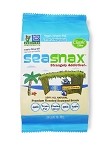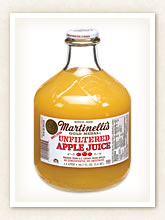As a kid, I went to camp in northern Wisconsin — Camp Marimeta in Eagle River, way, way up there! Those are days I will never forget — horseback riding, color wars, trampoline and good times with good friends.
The camp was on a lake, the scene of canoeing, kayaking, sailing and swimming — and in all those activities, I remember one thing… the seaweed!
When I think of seaweed, the first thing that comes to mind is the muck at the bottom of Lake Meta.
But then there’s the seaweed that you get in Japanese food. Not exactly the stuff on the bottom of the lake, or even the stuff that washes on the beach from the Ocean.
The seaweed you probably know from eating sushi is better known as Nori. Nori is from the red alga genus Porphyra, including most notably P. yezoensis andP. tenera. Before we see it wrapped around rice and raw fish, it goes through a process of shredding, drying and, most often, flavoring and toasting.
Nori may not seem like much, but it’s actually super high in nutritional value.
That thin, paper-like black stuff is high in protein, iron (vital for blood health), fiber and vitamins A (important for eyes, skin and teeth), C, K and B — especially B12 which can be lacking in many vegetarian diets. Seaweed is also high in iodine which is necessary for a functioning thyroid.
It also has zero grams of fat and very low calories for each sheet.
Because of its high mineral content, seaweed, along with its other sea veggie friends like dulse, kelp, wakame and arame, are often considered superfoods.
There are a number of different ways to incorporate sea vegetables into your diet, other than sushi. Some suggestions:
- Use kelp powder in place of salt on snacks like popcorn
- Add dulse to soup or salad
- For raw foodies, dulse is a key ingredient in non-tuna fish
- Make your own rolls. Try wrapping quinoa and black beans in nori for a high protein, vegetarian entree
Or … jump on the seaweed snack bandwagon!
It seems these days you can barely walk down an aisle at an organic grocery store like Whole Foods without bumping into a display of Annie Chun’s Seaweed Snacks or, more recently, Sea’s Gift brand.
Annie Chun’s comes in four flavors (although I’ve only seen the first two listed below at Whole Foods).
- Sesame
- Wasabi
- Cracked pepper and herb
- Brown sugar and sea salt
SeaSnax comes in a wider variety of flavors:
- Classic
- Chipotle
- Toasty onion
- Wasabi
And, in case there was any doubt, they’re all vegan.
I haven’t had Sea’s Gift yet, but I did stock up on Annie Chun’s when they were 10/$10 at WFM and I gotta say, it’s a tasty mid-afternoon treat!
I tend to crave salty, and it definitely hits that need and while I’m munching away, I can at least know that even though my snack tends to attract a few odd looks, I know that I’m eating something that’s good for me.
And, the other really appealing part, is they come in snack size packets, so keep a few in your drawer at work, and instead of reaching for salty chips high in fat and calories, reach for a little seaweed!
For someone who’s used to eating a diet full of … well… garbage … the road to healthy eating can be a daunting one.
I suppose I should consider myself lucky that even though I’ve always had a weakness for baked goods, my diet overall has been relatively healthy my entire life. After all, I grew up watching my mother exercising daily for as long as I can remember and her go-to lunch was cottage cheese and fruit (ok, so at the time it was canned fruit, very possibly in syrup, but that was the 70s and things were different then and at least it was fruit!). So, for me, playing around with my diet and weeding out the not-so-quality foods wasn’t that big of a deal.
But, I totally get that for some people it’s not quite so easy – and there are a million reasons why this could be so … crazy schedule, kids, husband, budget, etc. I get it! I do! But that’s why I’m constantly saying, “It really doesn’t have to be that hard!”
Can it be overwhelming if you’re not sure exactly what to eat, how to prepare the food, or even what to buy? Yes! Absolutely!
But, I promise, it doesn’t have to be!
One reason, when it comes to what I refer to mostly as “clean eating”, there are no rules. You don’t even necessarily need a recipe. In fact, I recommend avoiding recipes — especially those ones on Pinterest!Don’t get me wrong, I love Pinterest! I can spend hours toiling away and pinning one recipe after another, very few of which I’ll ever actually try. Why? Because I too get overwhelmed if there are too many ingredients.
So, put down the recipe, and pick up these ingredients.
- Olive Oil (or another healthy oil of choice, i.e. coconut oil, grapeseed oil, avocado oil)
- Lemon and/or Limes — or Apple Cider Vinegar if you like a little stronger acid flavor
- Salt
- Pepper
- Garlic (or garlic powder if it’s easier)
That’s it!
Honestly!!
I use those five ingredients in just about everything I eat and that’s the extent of it. Whether it’s a salad (romaine, iceberg, Kale or other), grains like quinoa, rice or noodles made with quinoa or rice, or veggies, I primarily stick to those five ingredients and it’s so easy.
Want a little more flavor? Keep these in the pantry:
- Indian flavoring: Cumin, coriander, ginger (highly recommended for the doshas that like warming foods, i.e. Vata)
- A little kick: Red pepper flakes and/or cayenne (added benefit that they’re good for the metabolism and building heat)
- Italian flavors: Keep dried basil, oregano, thyme, rosemary
- Asian twist: Tamari sauce, wasabi powder, dulse flakes, sesame seeds or sesame oil
And then, have fun!
When I can’t really decide what I want, I either stick to the basics in the first grouping, or I take something out of the cabinet and take a whiff. If it hits me as appealing at that moment, I sprinkle a little in. If it doesn’t, I put it back and try something else.
It’s honestly just that simple!
I love when I learn new things from my father. Well, let me clarify that…
I’ve learned little lessons that have turned into important lessons from my father my entire life. I always describe him as one of the smartest people I know. He just makes sense. He always knows the right things to say. They may not always seem like the right thing at the time, and sometimes what he says is the last thing I want to hear at the time, but, the fact is, he’s usually right.
In this case, though, what I’m talking about is learning something new as it relates to health and natural remedies.
No one in my family has ever been a juice drinker. We drank water, iced tea, and diet soda — no milk, no juice.
As I’ve gotten older, I’ve started drinking a bit of OJ, especially when I’m sick. I try to stick to the lower sugar brands, but I figure as long as I keep it to a minimum, I’ll get the vitamin C benefits and keep the sugar relatively under control.
With the exception of juice in a cocktail, which I still try to avoid, and some less than tasty unsweetened cranberry juice detoxes in the recent past, that’s about the extend of the juice I’ve had in all of my 41 years. Until now!
When dad was in town last week serving as my post-surgery livery service we went to the organic market near my house to pick up a few thing. That’s when dad mentioned he’d been drinking unfiltered apple juice at the advice of his acupuncturist. I’d certainly seen it in stores but never really paid much attention. I never, in my wildest dreams, imagined I would like apple juice! But, I thought, if dad is suggesting it, I should probably keep an open mind.
So we bought a bottle and headed home. A little ice. A little juice. A little sip. And what do you know? It was good. Really good.
Of course since I still wasn’t sure exactly why I was drinking this – other than my dad said I should – that meant I had to investigate.
According to the Martinelli’s brand website, unfiltered apple cider:
- Reduces the risk of certain cancers
- Protects against brain cell damage
- Reduces the risk of heart disease
- Reduces the risk of asthma
Recent findings also suggest it reduces the risk of Alzheimer’s disease.
But, if you’re looking for something a little more immediate to show it’s doing something, there are the colon-cleansing benefits – so much so that it’s often recommended for detoxes.
But why?
According to one article I found on Livestrong.com, the unfiltered kind contains a good amount of pectin, which is known to slow the absorption of food and binds to toxins and heavy metals to get them out of your body. Apples and apple juice also have malice and tartaric acid, which protect the liver and aid in digestion. I’ve also seen it recommended to add some apple cider vinegar to your apple juice to give it an added boost.
Also, it’s important to choose the unfiltered kind – the one that’s cloudy. This still has the benefits of the peel in it – and that’s where a lo of the benefits come in.
Another benefit — apple juice can be very filling and can satisfy a craving for something sweet. Lately I’ve been taking a swig of the juice when I find myself wandering around the kitchen looking for something to eat but not knowing what I want and it helps quiet the crazy cravings — at least long enough to get myself to eat nutrient dense foods that satisfy my hunger and my need for energy and what I like about drinking the juice as opposed to eating an apple is that I feel as if I’m getting the benefits without filling myself up on a piece of fruit and then can eat a full meal.
So to those who say “An apple a day… ” I say “A glass of unfiltered apple juice a day… “!
We all have something about our physical appearance that we’d like to be a little different.
Heck, there’s a reason the beauty and makeup industry rakes in billions upon billions of dollars each year. They thrive on the knowledge that people are always looking for ways to brighten their appearance, fight wrinkles, boost their glow, cover this, accentuate that, etc, etc.
For me, the problem area is my eyes — specifically the dark circles under them.
I’ve always been convinced that, to some degree, they’re hereditary and I’ve tried everything, I mean everything, to cover them up. I’ve tried expensive creams, cheap creams and just about every brand of cover up at Sephora, department stores and MAC.
Lately, they’ve gotten worse, so I’ve been doing some research to figure out the causes and some potential treatments.
There are the obvious solutions:
- Get 8 hours of quality sleep.
- Drink 8-10 glasses of water.
- Cut back on salt, caffeine and alcohol.
- Put down the fried and fatty foods.
- Increase your intake of iron rich foods.
Considering I do these (at least most of the time) and don’t see a difference, I decided to do a little more research.
There’s the theory that the skin is thin and blood vessels showing through. Some solutions for that:
- Preparation H hemorrhoid cream (seriously). It constricts blood vessels and supposedly makes the hue a little lighter.
- Vitamin E, which regulates vitamin A
- Vitamin K, which works on damaged capillaries
- Vitamin A, which has anti-aging properties and works on the skin around the eyes
- Steeped and cooled green tea bags or cucumbers on your eyes
- Almond oil
Being not overly excited about these options and preferring to get to the root of the problem which I generally believe comes from something going on inside and just manifesting itself on the outside, I wanted to see what Chinese medicine says about the purple tint under my eyes.
Chinese medicine teaches that darkness under eyes is related to the kidneys – usually some sort of deficiency. Chinese medicine doctors don’t actually use the eyes as a diagnosis of kidney issues, but the two seem to go hand in hand. A weak kidney is often the result of exhaustion and when the balance is off, you need to take steps to even things out.
Certain foods are known to support the kidneys. These include:
- Complex carbohydrates including whole grains like brown rice, millet and oats
- Dark leafy greens (which, let’s be real, seem to come into play for just about any ailment!)
- Root vegetables
- Kidney shaped foods like black beans and kidney beans
- Dark fruits such as blackberries and blueberries
- Seaweed, spirulina and kelp
- And, for animal protein eaters, eggs, oysters, squid and sardines
There are also foods the kidneys don’t particularly like. These include cold foods and raw foods – even raw vegetables. If you suffer from kidney deficiency, you want to lightly steam them.
On top of the foods that can help, I came across few anecdotes about people who turned to kidney support supplements and saw actual improvements in their dark circles within a few weeks or months. From what I can tell, these generally include some of the following ingredients:
Milk thistle, dandelion, marshmallow, artichoke, cornsilk, horsetail, burdock root, parsley, and uva ursi leaf.
Unfortunately, like just about anything else that requires the body to come back into balance, none of this is likely to be a magic bullet and work overnight and will require patience.
I intend to give some of these options a try – starting with a kidney support supplement or tincture – and will be sure to let you know if I find any success!
Do you have a solution that’s worked for you? I would love to hear about it!!



